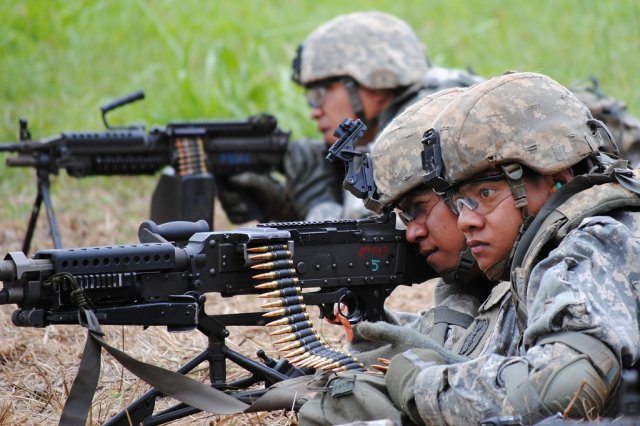Legislation being considered by both houses of Congress could provide the Army Reserve broader authority to call up troops for homeland security and also allow the force to deploy units for operations lasting 120 days or less.
Chief of the Army Reserve Lt. Gen. Jack C. Stultz said last week that the legislation would grant authority to call up as many as 60,000 Reservists per year from all services, for unnamed contingencies, both inside and outside the country. He spoke to reporters about the proposed expansion of Title 10 authority following a seminar Oct. 11 at the Association of the 2011 U.S. Army Annual Meeting and Exposition.
“For homeland use, current law says you can only use your Title 10 Reserve in the homeland in instances of weapons of mass destruction,” Stultz said, adding that the Army Reserve isn’t trying to insert itself or replace the National Guard.
“There should be a logical progression, just like there is now, where local civil authorities respond, then the governor calls up the National Guard — and in 90 percent of the cases that’s all that’s needed — but in that other 10 percent where the state needs federal help, we’d be available with a lot of needed expertise,” Stultz said.
Stultz said the National Governors Association and the National Guard Association felt there were no issues of infringement and they support the Title 10 change as well.
Additionally, the Army Reserve has sought the Title 10 change to allow it to support operations that are usually 90-to-120-day deployments and would give each Reserve force commander the authority to send one unit for the entire duration rather than have two or three units cover down in that same period of time.
The general also said he was looking at creating an operational reserve of about 25,000 Soldiers of which 5,000 could be pulled up trained and ready when the country needed them. This would keep the rotational cycle ideal at one year out, four years back.
Presently, the rotational cycles are “pretty good for the majority of units” at about 12 months out and 42 months back. He said some units are one to four, but others — such as aviation units — are still high- demand, high operations tempo, especially in Afghanistan. Yet others, like logistics units, are coming down as units move out of Iraq.
Stultz said the Reserve force needs to continue investing in modernizing equipment, providing the dollars for training and simulation systems that give Soldiers realistic training. He said if worthwhile training is not sourced or invested, the Reserve will lose what he called the “national treasure” because Reserve Soldiers don’t want to sit in a drill half for a weekend or go to summer camp and dig foxholes.
He noted as budgets shrink and the force becomes smaller that Soldier standards will be more closely looked at, and he, like the chief of staff of the Army, is concerned with the possibility of automatic budget cuts that would kick in if there’s no agreement on the $1.5 trillion in federal savings by the Congressional deficit reduction committee.
“If sequestration kicks in, we don’t want to end up doing what we’ve done in the past where we focus on how to get people off the rolls, not which people off the rolls,” he said. “We don’t want to incentivize the wrong people to leave the service.”
“We need to upgrade the standards, and if you can’t get there, you can’t stay in,” Stultz said. “We have people in our formations who we should have already eliminated, but for lack of a clerk or motor pool sergeant we kept them. Let’s process these people out so we can make room for those we want to keep.”










